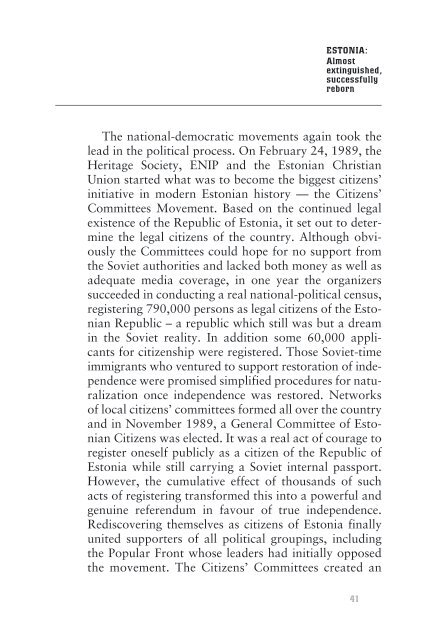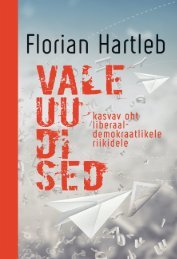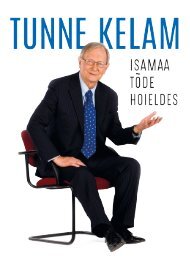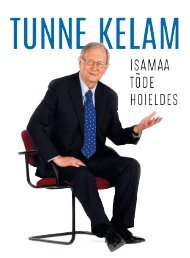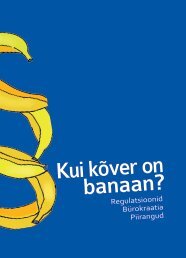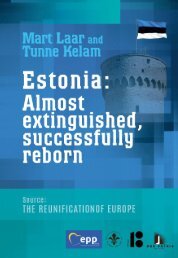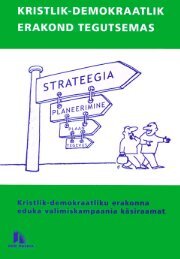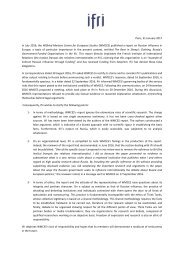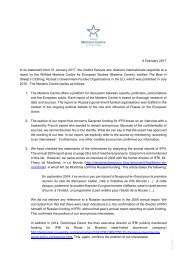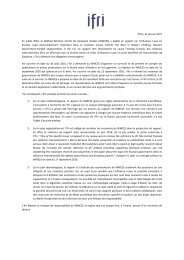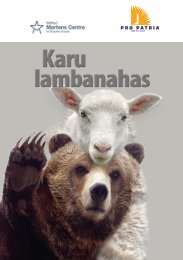ESTONIA: Almost extinguished, successfully reborn
The following text is the shortest possible review to help inform friends and guests from abroad about Estonia’s experience with foreign occupation and totalitarianism as well as its road to peacefully re-establishing national inde-pendence on the basis of democracy. Tunne Kelam Member of the European Parlament
The following text is the shortest possible review to help inform
friends and guests from abroad about Estonia’s experience with
foreign occupation and totalitarianism as well as its road to
peacefully re-establishing national inde-pendence on the basis
of democracy.
Tunne Kelam
Member of the European Parlament
Create successful ePaper yourself
Turn your PDF publications into a flip-book with our unique Google optimized e-Paper software.
<strong>ESTONIA</strong>:<br />
<strong>Almost</strong><br />
<strong>extinguished</strong>,<br />
<strong>successfully</strong><br />
<strong>reborn</strong><br />
The national-democratic movements again took the<br />
lead in the political process. On February 24, 1989, the<br />
Heritage Society, ENIP and the Estonian Christian<br />
Union started what was to become the biggest citizens’<br />
initiative in modern Estonian history — the Citizens’<br />
Committees Movement. Based on the continued legal<br />
existence of the Republic of Estonia, it set out to determine<br />
the legal citizens of the country. Although obviously<br />
the Committees could hope for no support from<br />
the Soviet authorities and lacked both money as well as<br />
adequate media coverage, in one year the organizers<br />
succeeded in conducting a real national-political census,<br />
registering 790,000 persons as legal citizens of the Estonian<br />
Republic – a republic which still was but a dream<br />
in the Soviet reality. In addition some 60,000 applicants<br />
for citizenship were registered. Those Soviet-time<br />
immigrants who ventured to support restoration of independence<br />
were promised simplified procedures for naturalization<br />
once independence was restored. Networks<br />
of local citizens’ committees formed all over the country<br />
and in November 1989, a General Committee of Estonian<br />
Citizens was elected. It was a real act of courage to<br />
register oneself publicly as a citizen of the Republic of<br />
Estonia while still carrying a Soviet internal passport.<br />
However, the cumulative effect of thousands of such<br />
acts of registering transformed this into a powerful and<br />
genuine referendum in favour of true independence.<br />
Rediscovering themselves as citizens of Estonia finally<br />
united supporters of all political groupings, including<br />
the Popular Front whose leaders had initially opposed<br />
the movement. The Citizens’ Committees created an<br />
41


